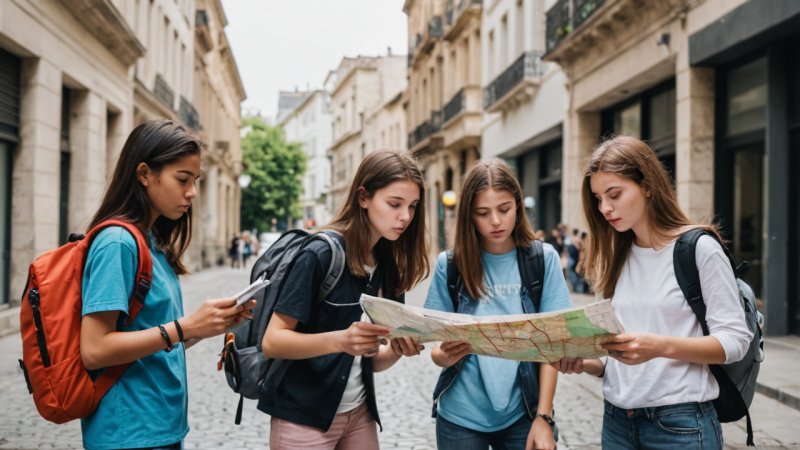Introduction
Traveling can be an exciting adventure for teenagers, offering them the opportunity to explore new cultures, meet new people, and create lasting memories. However, ensuring their safety while traveling is paramount. In this guide, you will learn essential steps to secure a safe travel experience for teenagers, covering everything from pre-trip planning to on-the-road safety tips.
Step 1: Pre-Trip Preparation
Before embarking on any journey, adequate preparation is crucial. This step lays the foundation for a safe trip.
- Research the Destination: Investigate the area where the teenager will be traveling. Look into local customs, safety concerns, and emergency contact numbers.
- Consult with Experts: Speak to travel agents or experienced travelers about the destination's safety.
- Check Travel Advisories: Refer to government travel advisories for specific warnings related to the destination.
Step 2: Health and Safety Measures
Health is a critical aspect of travel safety that should not be overlooked.
- Health Insurance: Ensure that the teenager has appropriate health insurance that covers international travel.
- Vaccinations: Check if any vaccinations are required or recommended for the destination.
- Pack a First-Aid Kit: Include basic medical supplies, necessary medications, and any specific items for pre-existing conditions.
Step 3: Communication Plan
Establishing a communication plan is vital for staying connected during the trip.
- Share Itinerary: Provide a detailed itinerary to parents or guardians, including accommodation addresses and emergency contacts.
- Regular Check-Ins: Set up a schedule for regular communication through messaging apps or phone calls.
- Provide Local Contacts: Encourage the teenager to connect with local friends or travel groups for support.
Step 4: Travel Safety Education
Educating teenagers about safety can empower them and reduce risks.
- Discuss Personal Safety: Teach them about staying aware of their surroundings and recognizing potential dangers.
- Emergency Procedures: Outline what to do in case of emergencies, including how to contact local authorities.
- Stranger Danger: Emphasize the importance of being cautious around strangers and not sharing personal information.
Step 5: Packing Smart
What your teenager packs can significantly impact their safety while traveling.
- Travel Light: Encourage them to pack only essentials to avoid being overwhelmed.
- Secure Valuables: Advise them to keep valuables, such as passports and money, in a secure and hidden place.
- Appropriate Clothing: Recommend clothing that suits the climate and local customs.
Step 6: Transportation Safety
Getting around safely is crucial during travel.
- Know Transportation Options: Research safe transportation methods in the area, such as reputable taxi services or public transport.
- Travel with Friends: Encourage teenagers to avoid traveling alone, especially at night.
- Stay Sober: If they are of age, remind them to drink responsibly and stay aware of their surroundings.
Step 7: Cultural Awareness
Understanding the culture of a destination can enhance safety and respect.
- Learn Local Customs: Research customs and etiquette to avoid misunderstandings that could lead to uncomfortable situations.
- Respect Local Laws: Make sure they are aware of any laws that are different from their home country.
- Language Basics: Encourage learning a few key phrases in the local language, as it can help in emergencies.
Conclusion
Traveling can be a rewarding experience for teenagers, but ensuring their safety is essential. By following these steps, including thorough pre-trip preparation, health and safety measures, creating a communication plan, educating on safety, packing smart, ensuring transportation safety, and respecting local cultures, you can help ensure a safe and enjoyable journey for your teenager. Remember, communication and awareness are key components of travel safety.






